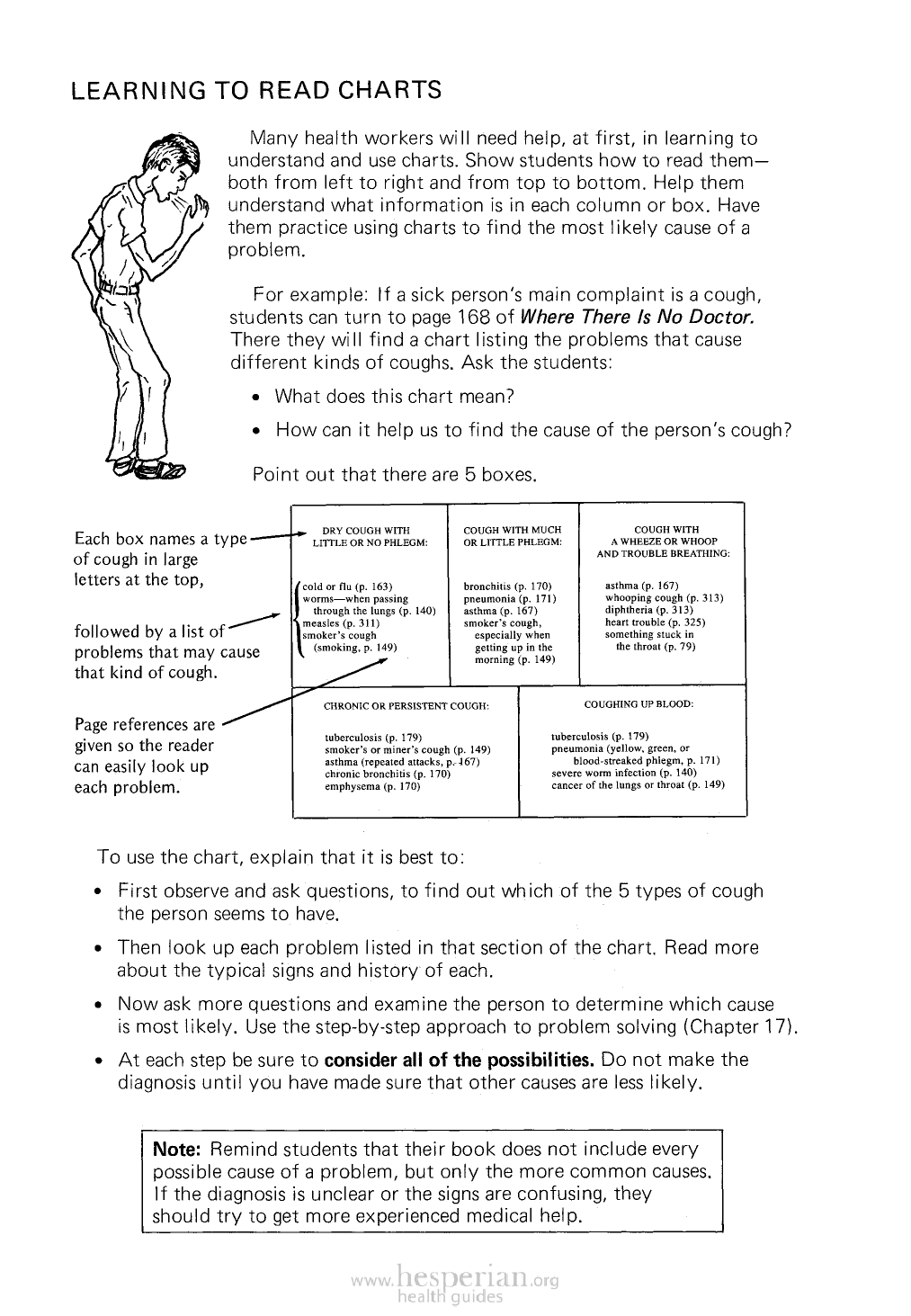
21-4
LEARNING TO READ CHARTS
Many health workers will need help, at first, in learning to
understand and use charts. Show students how to read them—
both from left to right and from top to bottom. Help them
understand what information is in each column or box. Have
them practice using charts to find the most likely cause of a
problem.
For example: If a sick person’s main complaint is a cough,
students can turn to page 168 of Where There Is No Doctor.
There they will find a chart listing the problems that cause
different kinds of coughs. Ask the students:
• What does this chart mean?
• How can it help us to find the cause of the person’s
cough?
Point out that there are 5 boxes.
Each box names a type
of cough in large
letters at the top,
followed by a list of
problems that may cause
that kind of cough.
{
Page references are
given so the reader
can easily look up
each problem.
To use the chart, explain that it is best to:
• First observe and ask questions, to find out which of the 5 types of cough the
person seems to have.
• Then look up each problem listed in that section of the chart. Read more about
the typical signs and history of each.
• Now ask more questions and examine the person to determine which cause is
most likely. Use the step-by-step approach to problem solving (Chapter 17).
• At each step be sure to consider all of the possibilities. Do not make the
diagnosis until you have made sure that other causes are less likely.
Note: Remind students that their book does not include every
possible cause of a problem, but only the more common causes.
If the diagnosis is unclear or the signs are confusing, they should
try to get more experienced medical help.